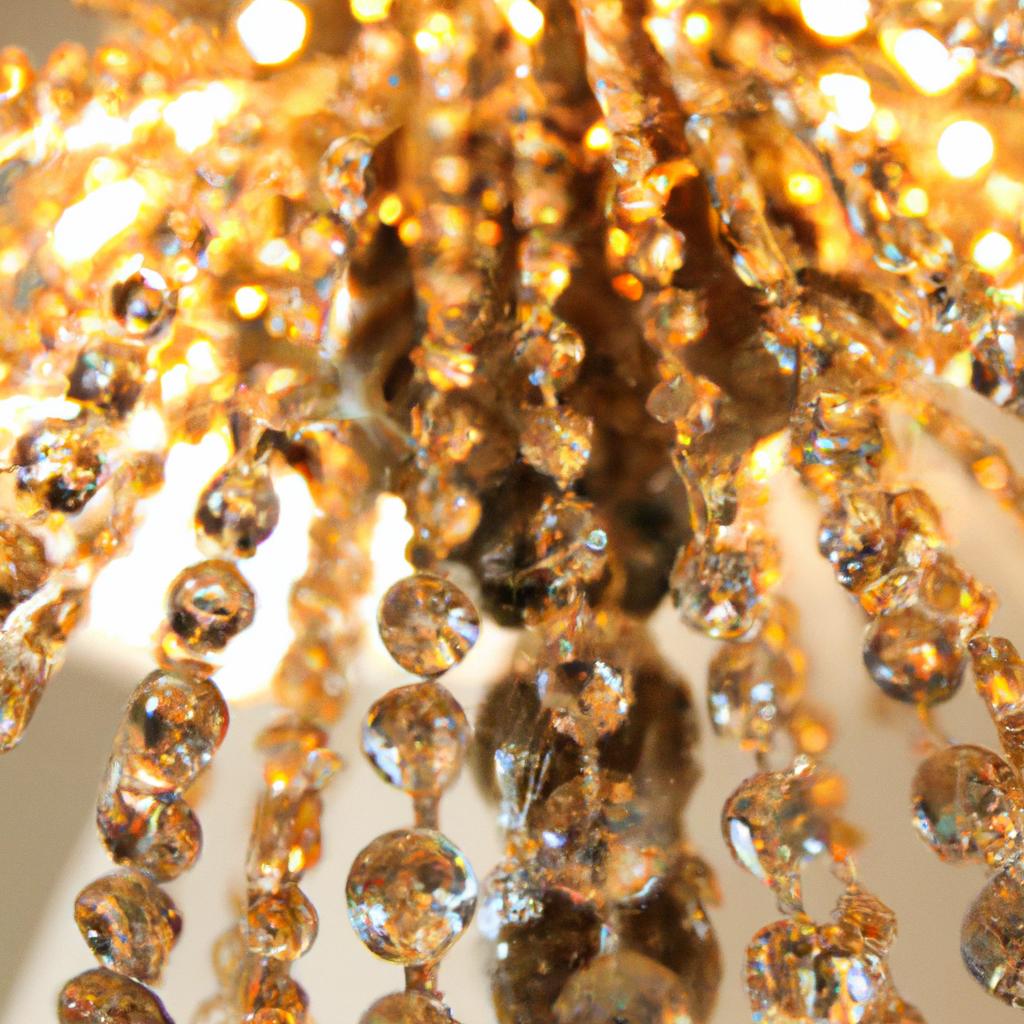Lighting Design: Creating the Perfect Atmosphere in Every Room
The right lighting design can make or break the atmosphere of a space. From living rooms to bedrooms, kitchens to home offices, every room of a house needs to be lit in order to achieve a cozy and comfortable atmosphere.
When done right, lighting design can be used to highlight particular elements, set the mood and make a room look incredible. Here is a guide to help you create the perfect atmosphere in every room with the right lighting.
Understanding the Basics of Interior Design and Lighting
When it comes to creating the perfect atmosphere in every room, one of the most important aspects is good lighting design. Lighting, when used correctly, can accentuate colors and shapes, create an inviting atmosphere and even set the mood of a space with the flick of a switch.
In order to make the most of lighting design, it’s important to understand the basics of both interior design and lighting. Here are some of the key concepts to keep in mind:
- Types of Lighting: There are three main types of lighting that should be taken into account when designing a space: ambient, task, and accent lighting. Ambient lighting provides general illumination for the room, while task lighting is used to illuminate specific areas such as a desk or reading area. Lastly, accent lighting is used to draw attention to specific points of interest such as artwork.
- Color Theory: The use of color in a room is essential to creating the right atmosphere and can make all the difference in how a space looks and feels. When applying colored lighting, take into consideration the room’s color scheme, as different colors can evoke different emotions.
- Primary and Secondary Light Sources: In order to achieve a balanced look, it is important to have both primary and secondary light sources. Primary light sources are the main fixtures that provide illumination for the entire room, while secondary light sources include table lamps, floor lamps, recessed lighting, etc.
With these basic concepts of interior design and lighting in mind, you’re now ready to start exploring different strategies for creating the perfect atmosphere in every room.
Living Room Lighting Strategies
Lighting has the power to transform any living room into a bright and inviting space. Good lighting design in the living room can not only create an atmosphere that is comfortable for you to spend time in but also presents the homeowners’ personal style.
When planning a living room lighting layout, it’s important to remember the three types of lighting: ambient, task, and accent lighting. Ambient lighting gives the room overall illumination and can include natural light, as well as table and floor lamps. Task lighting provides focused light on a specific area, such as reading lights or under cabinet lighting. Accent lighting is used to highlight certain features of the living room, such as artwork or a fireplace.
To achieve the perfect atmosphere in the living room, it is important to use all three types of lighting. Here are some tips for creating the perfect lighting design for your living room:
- Ensure that all areas of the room are sufficiently lit with ambient lighting.
- Include task lighting to brighten up areas where you will be working, like a desk or sofa corner.
- Use dimmer switches to add flexibility, allowing the light to be adjusted depending on what you want to do.
- Choose accent lighting to highlight things like paintings or plants for a dramatic effect.
These tips should help you create a living room with the perfect atmosphere. By utilizing all three types of lighting and customizing them to match your unique style, you can achieve the ideal living space for you and your family.
Bedroom Lighting Strategies
Your bedroom is your sanctuary; a place to relax and unwind after a long day. Good lighting design in the bedroom can set the perfect atmosphere, creating a cozy and comfortable space. Here are several strategies to consider when looking to light your bedroom.
Reading Lighting
Having the right task light for reading in bed is essential. Wall sconces on either side of your bed are a great way to provide both ambient light and focused task lighting for curling up with a book. You’ll want to make sure you get a soft white bulb that’s easy on the eyes.
Furniture Placement
The placement of furniture affects the way light is distributed around your bedroom. Consider avoiding positioning furniture directly in front of windows or other sources of natural light. This will ensure that light can be evenly dispersed throughout the room.
Color Theory
The colors of your room can have an impact on how the lighting is perceived. Warmer colors tend to make the room appear smaller and darker, while cooler tones can make it look larger and brighter. Choosing the right color scheme for your bedroom can help you create the perfect atmosphere.
Dining Room Lighting Strategies
When it comes to creating the perfect atmosphere in the dining room, thoughtful lighting design can go a long way. Utilizing a combination of task and ambient lights will help make your dinner parties more memorable. Here are some top tips for getting the best out of your lighting design.
- Choose complimentary light fixtures – Whether you opt for pendants or chandeliers, be sure to choose pieces that complement the style of your dining room.
- Create layers of lighting – Combining multiple sources of lighting can help create an inviting atmosphere while also drawing attention to key elements like artwork and decorations.
- Ensure adequate task lighting – Don’t forget the practical side of lighting design and be sure to provide enough light for guests to safely read menus or cutlery.
- Be mindful of color temperature – Warm white (2700K) is the most recommended temperature for dining rooms, as it creates a cozy and inviting glow.
- Be mindful of glare – Make sure the lighting isn’t too bright and doesn’t create glare on walls, glassware or accessories.
By keeping these tips in mind when designing your lighting scheme, you can create the perfect atmosphere for all your dinner parties!
Kitchen Lighting Strategies
Lighting your kitchen correctly is essential for you to be able to safely perform all of the necessary tasks. The right kind of lighting can also help to create a soothing and inviting atmosphere that will make you want to spend time in your kitchen. Here are some tips on how to get the perfect lighting in your kitchen.
- Task Lighting – For tasks that require intense concentration, such as food preparation, cooking, or any activities that need close inspection, it is important to have task lighting that provide a direct and focused light source.
- Ambient Lighting – Ambient lighting is used to provide soft, diffuse light that can be used for a more relaxed atmosphere, such as when dining or entertaining. This type of lighting helps to give a room a warm and inviting feel.
- Under Cabinet Lighting – Under cabinet lighting can be used to illuminate countertops for tasks such as food preparation. It’s important to use LED light sources, as they are energy efficient and will not generate heat, making them safe to use in kitchens.
- Accent Lighting – Accent lighting is used to highlight certain areas or features in the kitchen, such as artwork, plants, or other accessories. This type of lighting can help to create a more interesting look and feel in your kitchen.
By taking the time to create the perfect lighting for your kitchen, you can ensure that all of your tasks are performed safely and with ease, while also creating an inviting atmosphere that you can enjoy spending time in.
Home Office Lighting Strategies
When it comes to home offices, having the right lighting can make all the difference in creating a productive workspace. To make sure the atmosphere is conducive to concentration, it’s important to have both task lights and ambient lights.
Task lights should be aimed directly at your work surface, allowing you to clearly see what you’re working on. They should also be adjustable, so you can direct light exactly where you need it. Ambient lights should be softer and should lit up the whole room to create a warm, cozy atmosphere. You can also add accent lighting to highlight key pieces of decor and artwork.
It’s important to choose the right type of bulbs for each light source. For task lighting, look for a bright, cool white bulb that’s rated for the fixture you’re using. For ambient lighting, opt for a dimmable LED bulb that produces soft, warm light. With this combination of lights, you can easily switch between a focused and a relaxed environment in your home office.
Summary and Conclusion
Lighting is an important part of interior design, providing an atmosphere that reflects your style, personality, and taste. In this guide, we discussed the basics of lighting design and how to create the perfect atmosphere in every room. We also provided strategies for lighting living rooms, bedrooms, dining rooms, kitchens, and home offices.
To summarize, lighting design is a great way to enhance the look and feel of your home. With the right combination of light sources, furniture placement, colors, and accessories, you can create an atmosphere that’s both inviting and cozy. Whether you’re looking to add a romantic vibe to your bedroom or create a productive workspace in your home office, strategic lighting design is the key to success.
So, what are you waiting for? Get started on designing your own perfect atmosphere with lighting design. It doesn’t need to be intimidating or overwhelming. With the tips and advice outlined in this guide, you can achieve stunning results in no time!
comments: 0

